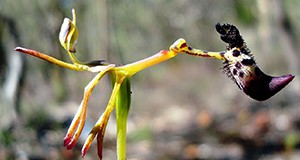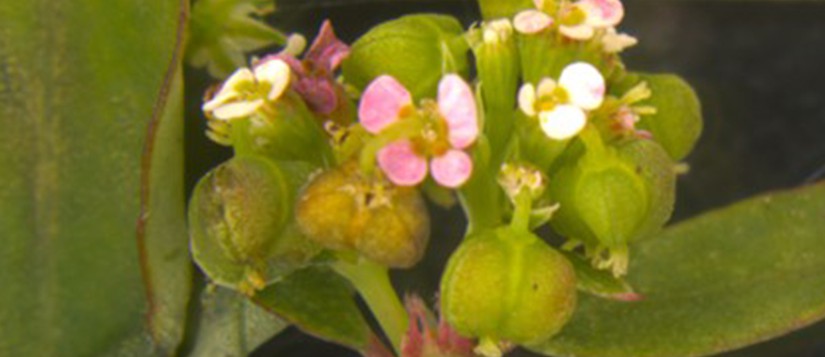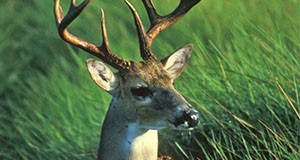In the agricultural industry, telling your story is critical for establishing your operation’s identity. Communicating face-to-face is one method of getting your message to the public. This 2-page fact sheet presents tips and strategies for delivering your story to a live audience. Written by Brandon Telg, Jaron Jones, and Ricky Telg, and published by the UF Department of Agricultural Education and Communication, July 2015.
http://edis.ifas.ufl.edu/wc217
Author: Sam Grenrock
Preventing Foodborne Illness: Norovirus

If you have ever had the stomach flu, norovirus was likely the culprit. Norovirus is the most common cause of foodborne illness in the United States and is transmitted through direct person-to-person contact or contaminated objects and food. This 5-page fact sheet covers how norovirus is spread, foods associated with norovirus, symptoms of infection, who is at risk, as well proper sanitation methods for preventing the spread of norovirus. Written by Rachael Silverberg, Melissa K. Jones, Renée Goodrich Schneider, Aswathy Sreedharan and Keith R. Schneider, and published by the UF Food Science and Human Nutrition Department, June 2015.
http://edis.ifas.ufl.edu/fs129
Planning for a Farm Tour: Keeping the Conversation Fresh
Hosting tours at your farm can be a great way to market your products and your farm’s brand. Tours let you tell potential customers how you grow your food, why they should buy it, and who you are as a farmer. This 3-page fact sheet discusses these topics and provides logistical advice for planning and executing a successful farm tour. Written by Claire Mitchell and Joy N. Rumble, and published by the UF Department of Agricultural Education and Communication, August 2015.
http://edis.ifas.ufl.edu/wc219
Plant Diagnostic Clinic and HLB Lab
The Plant Pathology program at the UF/IFAS Southwest Research and Education Center is the state and local resource for plant diagnostic services, including HLB (Huanglongbing, or citrus greening) detection, and for insect identification. This brochure covers the center’s history, instructions for sending samples to the HLB lab, answers to frequently asked questions, and center hours and contact information. Written by Pamela Roberts, Shea Teems, Joubert Fayette, and Jamie Burrow, and published by the UF Department of Plant Pathology, July 2015.
http://edis.ifas.ufl.edu/pp319
Golden Canna: Canna flaccida
Golden canna is a native wetland plant with bright yellow flowers that can be found throughout most of Florida. This 4-page facts sheet details the golden canna’s biology, distribution and habitat, propagation, pests and diseases, and landscaping and other uses. Written by Edward F. Gilman, Carl J. Della Torre III, and Lyn A. Gettys, and published by the UF Department of Environmental Horticulture, June 2015.
http://edis.ifas.ufl.edu/fp102
Improving Weed Control in Landscape Planting Beds
Because landscape beds often contain a variety of ornamental plants, shrubs, and trees, using herbicides to control weeds in these areas can be challenging; however, non-herbicidal methods can be labor intensive. This 6-page fact sheet outlines how to use landscape design and cultural and chemical practices to effectively control weeds in landscape beds. This publication also discusses the use of pre- and postemergent herbicides. Written by Chris Marble and Andrew Koeser, and published by the UF Department of Environmental Horticulture, June 2015.
http://edis.ifas.ufl.edu/ep523
Encouraging Landscape Water-Conservation Behaviors #3: Developing Extension and Outreach Messages That Encourage Landscape Water Conservation Practice Adoption
Message framing can be an effective tool for crafting messages for a target audience. This 5-page fact sheet explains how Extension can use gain and loss message framing to encourage Florida residents who irrigate their home landscape to adopt water-conservation practices. Part three of the series Encouraging Landscape Water-Conservation Behaviors and written by Courtney Owens, Laura Warner, Joy Rumble, Alexa Lamm, and Randall Cantrell, and published by the UF Department of Agricultural Education and Communication, June 2015.
http://edis.ifas.ufl.edu/wc201
Using the Decision-Ade(TM) Segmentation Strategy to Better Understand Extension Audiences

Decision-Ade™ is a tool Extension can use to better understand how residents with a range of household budgets feel about their utility bills. Analyzing households in terms of both income and utility bill “botheredness” creates a more comprehensive picture of that household’s utility use and its willingness to modify utility consumption relative to other households. This 5-page fact sheet uses survey data of Florida residents to demonstrate the insights Decision Ade™ can provide and how those insights can inform Extension programming. Written by Randall Cantrell, Laura Warner, Joy Rumble, and Alexa Lamm, and published by the UF Department of Family, Youth and Community Sciences, July 2015.
http://edis.ifas.ufl.edu/fy1461
Food and Fitness: Myths and Truths

Do you know how much water you should drink before exercise? Does loading up on carbs before a strenuous cardio workout improve performance? This 6-page fact sheet debunks some common myths about nutrition and fitness and offers other helpful advice for those who wish to stay active and eat a healthy diet. Written by Linda B. Bobroff and Amy Mullins, and published by the UF Department of Family, Youth and Community Sciences, June 2015.
http://edis.ifas.ufl.edu/fy470
Peach Rust

Peach rust is a fungal disease that affect the leaves and, less commonly, twigs and fruit of peach trees. The fungus that causes peach rust thrives in Florida’s humid climate and may cause significant economic losses in severely affected orchards. This 5-page fact sheet details peach rust symptoms, disease cycle, and management, including fungicide treatments. Written by Courtney Ligon, Mercy Olmstead, and Phillip Harmon, and published by the UF Department of Horticultural Sciences, June 2015.
http://edis.ifas.ufl.edu/hs1263
Postbloom Fruit Drop (PFD) Identification and Management

This two-sided ID card is idea for growers working in the field trying to identify or manage postbloom fruit drop (PFD) in citrus. The ID card includes photos of blooms affected by PFD and photos of healthy blooms for comparison. The card also includes facts and tips for managing PFD. Written by Megan M. Dewdney, Natalia A. Peres, and Jamie D. Burrow, and published by the UF Department of Plant Pathology, July 2015.
http://edis.ifas.ufl.edu/pp318
Adonidia merrillii: Christmas Palm

The Christmas palm (Adonidia merrillii) is a fast-growing palm that is well-suited for small sites, requires little maintenance, is relatively disease-free, and produces clusters of bright red fruit in winter, hence the common name Christmas palm. This 2-page fact sheet covers the Christmas palms biology, distribution and habitat, susceptibility to disease, and general care. Written by Timothy K. Broschat, and published by the UF Department of Environmental Horticulture, July 2015.
http://edis.ifas.ufl.edu/st658
Fungal Gummosis in Peach

Fungal gummosis in peach occurs when the fungus Botryosphaeria dothidea infects small openings or wounds in tree branches or trunks. The disease causes blisters on the tree that form lesions and eventually ooze gum (sap). This 3-page fact sheet covers the disease cycle and management of fungal gummosis in peach, which is often difficult to control. Written by Sara Sherman, Mercy Olmstead, Philip Harmon, and Thomas Beckman, and published by the UF Department of Horticultural Sciences, July 2015.
http://edis.ifas.ufl.edu/hs1265
Biology and Management of Graceful Sandmat (Chamaesyce hypericifolia) in Ornamental Crop Production
Graceful sandmat (Chamaesyce hypericifolia) is a problematic weed that often grows in container media in ornamental plant nurseries. This 4-page facts sheet profiles the biology of graceful sandmat and recommends physical, cultural, and chemicals methods for managing the weed in the nursery environment. Written by Theresa Chormanski, Chris Marble, and Lyn Gettys, and published by the UF Department of Environmental Horticulture, June 2015.
http://edis.ifas.ufl.edu/ep522
Orchid Pollination Biology

Orchids and their pollinators have developed fascinating co-adaptations that promote orchid pollination. This 6-page fact sheet details the various and often strange ways that orchids attract pollinators. The kinds of insects and animals that pollinate orchids and orchids’ reproductive anatomies and processes are also covered. Written by Haleigh Ray and Wagner Vendrame, and published by the UF Department of Environmental Horticulture, June 2015.
http://edis.ifas.ufl.edu/ep521
Spondias Growing in the Florida Home Landscape
Spondias species (whose common names among English speakers include ambarella, Ataheite apple, mombins, and hog plums) are flowering trees native to tropical and subtropical regions. They are known for their sweet fruit and grow well in the warmest parts of Florida. This 8-page fact sheet discusses biology, distribution and uses, as well as guidelines for propagation and maintenance. Written by Jonathan H. Crane and Jeffrey Wasielewski, and published by the UF Department of Horticultural Sciences, April 2015. (Photo by Forest & Kim Starr, CC BY 3.0)
http://edis.ifas.ufl.edu/mg059
Skyflower: Hydrolea corymbosa
Skyflower is a native wetland plant that produces brilliant blue flowers and can be found throughout Florida. This 4-page facts sheet details skyflower biology, distribution and habitat, propagation, and uses. Written by Lyn A. Gettys and Carl J. Della Torre III, and published by the UF Department of Agronomy, July 2015.
http://edis.ifas.ufl.edu/ag397
Healthy Living: Diabetes
Diabetes is a serious health condition that occurs when a person’s body has difficulty making or using insulin, which results in high blood glucose (blood sugar) and can lead to other complications. This 3-page facts sheet covers the effects of high blood glucose, who is at risk, the symptoms and management of the condition, and additional resources for those with or at risk of developing diabetes. Written by Linda B. Bobroff, Karla P. Shelnutt, and Paulina Wittkowsky, and published by the UF Department of Family Youth and Community Sciences, June 2015.
http://edis.ifas.ufl.edu/fy078
Some Challenges behind Communicating about Climate Change
 Media coverage of climate change can often leave the average person confused and unsure what to believe. However, as a trusted source of information and research, Extension has the opportunity to educate people about climate change and appropriate adaptation strategies in a scientific, unbiased way. This 5-page fact sheet outlines four challenges of climate change education. Written by Martha Monroe, Claire Layman Bode, and Mark A. Megalos, and published by the UF School of Forest Resources and Conservation, May 2015.
Media coverage of climate change can often leave the average person confused and unsure what to believe. However, as a trusted source of information and research, Extension has the opportunity to educate people about climate change and appropriate adaptation strategies in a scientific, unbiased way. This 5-page fact sheet outlines four challenges of climate change education. Written by Martha Monroe, Claire Layman Bode, and Mark A. Megalos, and published by the UF School of Forest Resources and Conservation, May 2015.
http://edis.ifas.ufl.edu/fr392
Managing Conflicts with Wildlife: Living with Deer
Though deer rarely pose problems for people, it is important to understand the issues associated with deer and human-deer interactions. This 4-page fact sheet describes the biology of Florida’s white-tailed deer, the hazards associated with deer, and how to minimize these risks. Written by William M. Giuliano, Holly K. Ober, Lauren Watine, and Raoul Boughton, and published by the UF Department of Wildlife Ecology and Conservation, December 2014.
http://edis.ifas.ufl.edu/uw398











